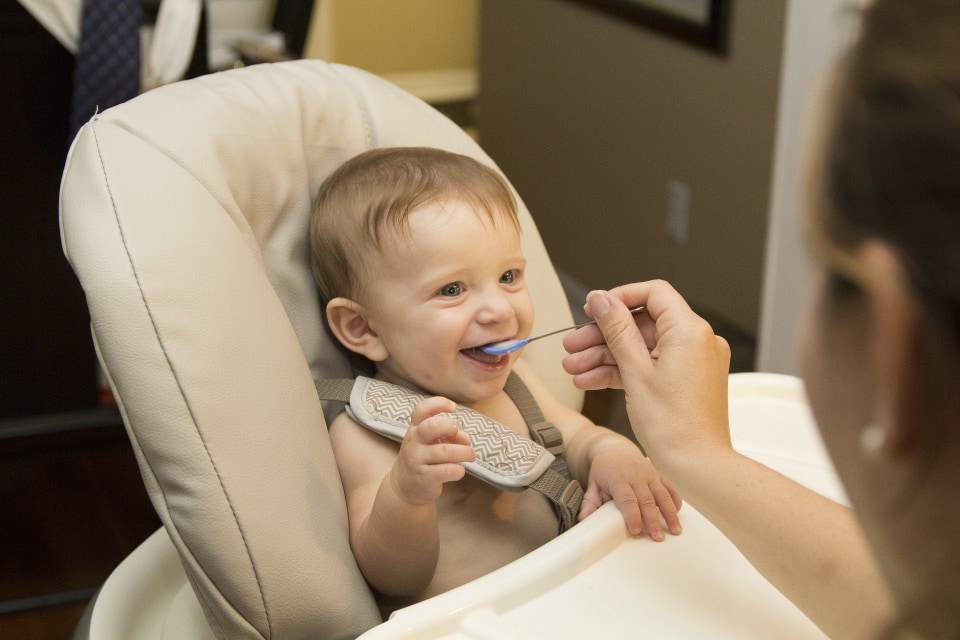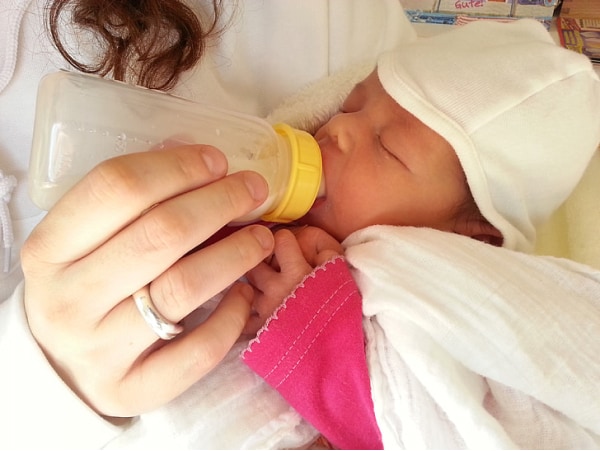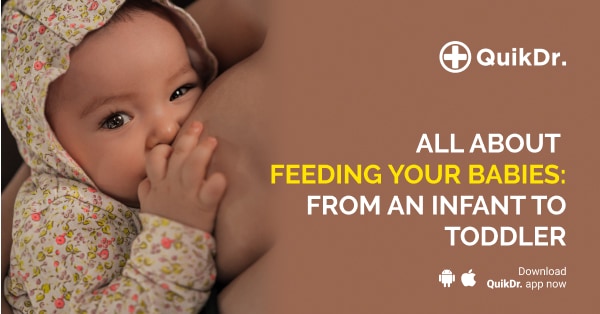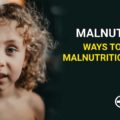Do you remember how tiny your baby was when he/she was first born? They don’t stay like that for too long, don’t they? Babies grow so fast, and it is their diet that provides them with all the nutrients and energy to grow properly. Parents are often confused about how often their baby should eat and what kind of food is best for them.
Are you sure whether you are feeding your baby enough breast milk, formula, or solid food? Read the baby feeding guidelines given below.
Baby Feeding Guidelines

Birth to 6 months
Breastfeeding or formula is the best way to feed your newborn. For your baby, breast milk provides every nutrient the body needs for optimal growth and development. Most of the newborns drink milk every 2 to 3 hours, and they drink 1 to 2 ounces of breastmilk per feed. A two-month-old baby drinks 4-5 ounces every 3 to 4 hours, whereas 6 months old drink 8 ounces every 4 to 5 hours.
A formula-fed infant takes about 2 to 3 ounces per feeding and will eat every three to four hours. The food intake amount will increase by 1 ounce per month. As a general baby feeding guideline, feed your little one 2.5 ounces of formula per pound of body weight.
7 to 12 months
When your baby is around 6 to 8 months, nearly all of the calories should come from breastfeeding or formula. Breastfeeding is one way to prevent malnutrition in kids.
Since your little one is still getting most of the calories from liquid, don’t worry if he is not taking bite after bite solid food. During this time, your baby can eat anything except honey. Feed them with foods such as iron-fortified single-grain baby cereal, pureed vegetables, fruits, and meats. Start offering finger foods such as strained vegetables, fruit, yoghurt, cottage cheese, and casseroles when your baby is around 6-8 months old. As your baby’s solid intake starts increasing, you should continue to feed the same amount of breastmilk.
Once your baby reaches 9 to 12 months, half of the calories should come from solid food and the other half from breastfeeding or formula. Your goal should be to feed 16 to 24 ounces of formula daily or breastfeed every four to five hours. Your baby can take about half a cup of food 3 to 4 times a day. Give them potatoes, fruits, legumes, dairy products, and vegetables. Breastfeed them whenever they are hungry.
When babies reach this age, they tend to have a very adventurous palate—they have learned to take solid foods according to their taste buds. If your baby wants more, feed more, but if your little one pushes food away or spits it away, don’t take it personally. Try to give the same food after a few days. You can also mix it with another food that your baby likes the most.
Since babies like to play with their food very much, you can consider yoghurt or oatmeal as a dip for vegetables. Keep in mind to chop foods and avoid those that are round, hard, or the size of a child’s airway.
1 to 2 years
After the first birthday, your baby should eat more often and rely on foods, including milk products, to get all the nutrition that the body needs. Most of the calories at this stage should come from finely chopped table food. Include 4 to 5 meals a day along with healthy snacks. To meet the calcium needs, give bottle milk at meals and with snacks. It is very important that toddlers should drink 2 to 3 cups of milk every day.
Never give your baby junk food, soft drinks, cookies, candies, etc. They have high amounts of fat, sugar, salt, and chemicals and take up space in your baby’s stomach. It is okay if your toddler wants to have his own bowl of food. This will make him learn to feed himself.
Give your little one all the nutrition he needs. At first, he will be slow and very messy. Help him when he is trying to eat by getting most of the food into his mouth. Make sure that your little one has had enough.
The amount of food mentioned here are just general recommendations, so don’t worry too much if your baby eats a bit more or less than suggested. It is always best to discuss your plan for starting solid food with a paediatrician before getting started.
How to know if your baby is getting enough to eat?

If you are breastfeeding, it’s pretty difficult to tell how much milk your little one is drinking. A key sign that indicates whether or not your baby is eating enough is the number of wet or dirty diapers. During the first few days after birth, your baby should wet at least 2 to 3 diapers each day. Then, after the first 4 to 5 days, note whether your baby is wetting at least 5 to 6 wet diapers a day. Your baby’s stool frequency is more variable, and it depends on whether your baby is breast-fed or formula-fed.
Give your baby the right amount of food according to age. If you feel that your baby is not having enough food or refusing to eat, talk to a specialized doctor. If you find it difficult to take your little one to a hospital, you can consult doctor online sitting at your home.






